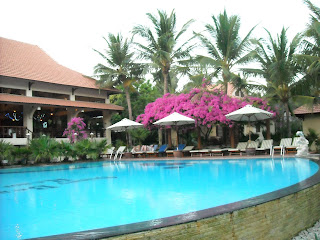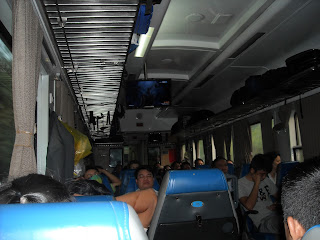When I decided to return
to Vietnam after almost fifty years, I’m not sure what I expected to find, but
one thing I hoped for was a feeling of connection with my fellow soldiers who
lived and died there. Perhaps a sign that our sacrifice had some meaning.
There are three main war attractions
advertised for tourists in Ho Chi Minh City. The Cu Chi tunnels, the
Reunification Palace (formerly Independence Palace) and the War Remnants Museum.
The Cu Chi Tunnels tour was an all day affair and we planned only one day in
the city. The brochure advertising the tunnels showed a woman tourist barely
able to squeeze down a hole in the ground. During the war I had the opportunity
to crawl into a tunnel that had already been cleared of the enemy but I declined.
I had no problem passing on it a second time either. The US soldiers whose job it was to do the
clearing, were called “Tunnel Rats”. They had to be small in stature to fit in
the holes. I don’t think civilians can appreciate the level of courage some soldiers
in war must have on a daily basis and the Tunnel Rats were some of the most
courageous.
 The Reunification Palace
was closed because of some sort of convention that day. So that left the War
Remnants Museum. From 1975 until 1995 it was called the “Exhibition House for Crimes of War and Aggression”. When
Vietnam’s relations with the US normalized, the name was changed to the “War
Remnants Museum”, but as I was about to find out, the exhibitions stayed true
to the original name. I
would caution my fellow Vietnam Veterans about going to this museum. I felt
terrible during and long after our visit there. I did not go to another
military attraction for the rest of our two week long trip in Vietnam because
of it.
The Reunification Palace
was closed because of some sort of convention that day. So that left the War
Remnants Museum. From 1975 until 1995 it was called the “Exhibition House for Crimes of War and Aggression”. When
Vietnam’s relations with the US normalized, the name was changed to the “War
Remnants Museum”, but as I was about to find out, the exhibitions stayed true
to the original name. I
would caution my fellow Vietnam Veterans about going to this museum. I felt
terrible during and long after our visit there. I did not go to another
military attraction for the rest of our two week long trip in Vietnam because
of it.
Upon entering the grounds,
a deformed man approached us offering to sell us a variety of books. He had no
hands and said they were been blown off by an unexploded mine. I tried to give
him money, but he said he didn’t accept charity, so I bought a small book for a
ridiculously high price.
Sitting on the grounds outside
the museum are US military weapons and hardware- planes, tanks, artillery
pieces, etc. Katie took my picture next
to a Huey. I flew around in Hueys a lot during
the war. The helicopter pilots and their crews were also some of the bravest
men I’d ever met. They put themselves in harm’s way repeatedly to save
soldiers’ lives, including mine. The sight and sound of a Huey will always be a
positive symbol for me.
The first exhibit was
along the side of the museum building. The theme was torture. There were
pictures and implements of various ways the French and American soldiers
tortured Vietnamese prisoners. There were metal cages, leg and wrist irons and
even a guillotine with which, they claim the French used to behead people. In a
display case along with other implements of torture, was an US army field
telephone. The label next to it said, “A military telephone set transformed
into a torture instrument which can discharge electric shocks to the tortured.”
 My job for much of my
tour in Vietnam was as a POW Interrogator. The field telephone was our primary
method to get uncooperative detainees to talk. I didn’t like to torture detainees
and part way through my tour I became somewhat of a pacifist. Subsequently, I
was not a very effective Interrogator with the hard core prisoners. There is
way too much I could write about this, but suffice it to say that seeing the
field telephone brought up some deep emotions. But foremost in my thought was,
what about all the cruel and inhumane things the VC and NVA did to American and
ARVN soldiers, and innocent villagers. I witnessed plenty of cruelty on their
part. I guess there is one sided propaganda spun by both sides.
My job for much of my
tour in Vietnam was as a POW Interrogator. The field telephone was our primary
method to get uncooperative detainees to talk. I didn’t like to torture detainees
and part way through my tour I became somewhat of a pacifist. Subsequently, I
was not a very effective Interrogator with the hard core prisoners. There is
way too much I could write about this, but suffice it to say that seeing the
field telephone brought up some deep emotions. But foremost in my thought was,
what about all the cruel and inhumane things the VC and NVA did to American and
ARVN soldiers, and innocent villagers. I witnessed plenty of cruelty on their
part. I guess there is one sided propaganda spun by both sides.

Inside the museum on the
main floor were pictures that chronicled the evolution of the war from the
Communists’ perspective. Eisenhower and Kennedy were written about unfavorably
and there was a picture of President Johnson looking like the devil himself.
The only pictures of American soldiers were those depicting them in acts
of violence against the Vietnamese people. There were displays on the effects of agent orange, fire bombing and napalm. I had seen these atrocities first hand 49 years ago and did not want to see them again. I grabbed Katie's hand and moved on. At one point I had to stop, sit down and breathe. I longed to connect with another Veteran. I even stopped and asked
a couple of men tourists who looked about my age if they happened to be
veterans of the war, but none were.
One section was devoted
to pictures of American war protesters. They were characterized as being rebels for
truth, similar to the Communists themselves. Upstairs in a large room were
pictures and biographies of western journalists who died covering the War. They
too were heroes of the west, dedicated to telling the truth about the war, through
their reporting of the war atrocities. And of course the My Lai massacre was
highlighted.
As I watched tourists
casually taking in the pictures and displays, and reading the propaganda
plaques beside each one, I wanted to yell out to them that the only reason the
protestors and journalists could speak out or write about the war in this way
was because of our American Constitutional rights of freedom of speech and
freedom of the press. The Communists were misusing these freedoms, which they
still deny their own people, to support their one sided interpretation of the
war,
My emotions were all over
the place. I broke down in tears several times, I became intensely angry at the
Communist sons a bitches and by the time we finished wandering around the
museum I felt numb and exhausted.
 A display case in one of
the souvenir shops outside the museum had cigarette lighters with American
military unit insignias, years of in-country service and engraved sayings. Sayings
like: “We the willing, trained by the unskilled to do an impossible job for the
ungrateful” and “You have never lived ‘til you almost died, for those who fight
for it, life has a flavor the protected will never know,” and “If you think sex
is exciting, try incoming”. I don’t know if these lighters actually belonged to
soldiers and sailors, but as I looked at them and read the inscriptions, I felt
a deep connection with the guys I served with and all those who participated in
the war. The Vietnam “American” War will probably go down in history at best as
a big American blunder and at worst as another example of America’s unwarranted
aggression in the world. I realized I would not find redemption or whatever I
was looking for in the war museums, sites and displays. It would have to be
found elsewhere, if at all.
A display case in one of
the souvenir shops outside the museum had cigarette lighters with American
military unit insignias, years of in-country service and engraved sayings. Sayings
like: “We the willing, trained by the unskilled to do an impossible job for the
ungrateful” and “You have never lived ‘til you almost died, for those who fight
for it, life has a flavor the protected will never know,” and “If you think sex
is exciting, try incoming”. I don’t know if these lighters actually belonged to
soldiers and sailors, but as I looked at them and read the inscriptions, I felt
a deep connection with the guys I served with and all those who participated in
the war. The Vietnam “American” War will probably go down in history at best as
a big American blunder and at worst as another example of America’s unwarranted
aggression in the world. I realized I would not find redemption or whatever I
was looking for in the war museums, sites and displays. It would have to be
found elsewhere, if at all.

 The bus dropped us in the
middle of town and we walked up a narrow lane lined with small restaurants and hotels.
Our hotel was near the top of the hill. Two gentle soft spoken Vietnamese women
checked us in and informed us that the budget room we had booked had been
upgraded, for some reason, to a villa.
The bus dropped us in the
middle of town and we walked up a narrow lane lined with small restaurants and hotels.
Our hotel was near the top of the hill. Two gentle soft spoken Vietnamese women
checked us in and informed us that the budget room we had booked had been
upgraded, for some reason, to a villa. We took a taxi to the
fishing village section of Mui Ne and spent the day walking around. It was a
hot day, but beautiful. We ventured down a lane where the locals lived and down
to the beach near the fishing boats. The area was primitive and beautiful and trash
and garbage was strewn all around.
We took a taxi to the
fishing village section of Mui Ne and spent the day walking around. It was a
hot day, but beautiful. We ventured down a lane where the locals lived and down
to the beach near the fishing boats. The area was primitive and beautiful and trash
and garbage was strewn all around. 











































